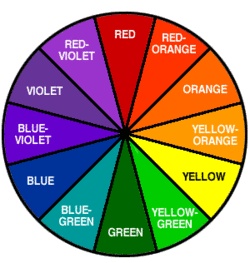The What:
- Color blindness (color vision deficiency) is a condition in which certain colors cannot be distinguished, and is most commonly due to a genetic condition.
- Red/Green color blindness is the most common form, about 99%, and causes problems in distinguishing reds and greens. Red-green color blindness doesn’t mean that you are only mixing up red and green colors, but the whole color spectrum can cause you problems.
- The specialized cells of vision in the retina are called rods and cones. We use these cells for normal vision. Rods are useful for night vision and working in dim light. Cones are responsible for color vision. They work best in daylight. Three types of cone pigments are present in normal vision. These are sensitive to either blue, green or red colored objects. Together, they let you see a wide range of colors, from purple through red. For normal color visions, all three cone pigments must work correctly. When a cone pigment is abnormal or missing, a type of color vision deficiency is present.

The How:
- Color blindness occurs in about 10% of males and about 0.5% of females. Total color blindness (seeing in only shades of gray) is extremely rare.
- A child inherits a color vision deficiency by receiving a faulty color vision gene from a parent. Abnormal color vision is found in a recessive gene on the X-chromosome. Men are born with just one X and one Y chromosome. However, women have two X chromosomes. Because of this, women can sometimes overcome the faulty gene with their second normal X chromosome. Men, unfortunately, do not have a second X chromosome to help compensate for the faulty color vision gene.
- A color-defective male always inherits his deficiency from his mother; the mother however is not colorblind. A father can’t pass his red-green color blindness on to his sons. But a grandfather could pass his color blindness on to his grandsons through their mother. If a woman is red-green colorblind, all her sons will also be colorblind.
Fun Facts:
- In World War II, colorblind men were sent on special missions, because their decreased ability to see green led to an increased ability to see through or detect camouflage.
- Famous Colorblind People: John Dalton* (developed theory of atomic structure), Mark Twain, and Bill Clinton
- Emerson Moser, who was Crayola's senior crayon maker revealed upon his retirement that he was blue-green colorblind and could not see all the colors!
- Everyone is colorblind at birth
- “What color is this?” is the most annoying question you can ask your colorblind friend.
* The English chemist John Dalton published the first scientific paper on color blindness in 1798, called "Extraordinary facts relating to the vision of colors", after the realization of his own color blindness. He thought that shortage in color perception was caused by discoloration of the liquid medium of the eyeball. Because of Dalton's work, the condition was often called Daltonism. Dalton's diagnosis was confirmed in 1995, some 150 years after his death, by DNA analysis of his preserved eyeball.

The Hard Way:
Color blindness can be very frustrating for individuals affected by it. Being color blind can keep one from performing certain jobs (piloting, operating vehicles in response to color-coded signals, and mixing paint colors) and makes others difficult (like being a police officer, captain of a ship, or getting a driving license).
Life's minor frustrations (and occasional dangers) for the color blind:
- Maps in general because of the color coding on the legends.
- Bi-color and tri-color LEDs (Light Emitting Diodes): Is that glowing indicator light red, yellow, or green?
- Traffic lights: Color blind people always know the position of the colors on the traffic. It isn't good when we go to a city or state where they put traffic lights
- Color observation by others: "Look at those lovely pink flowers on that shrub". My reply, looking at a greenish shrub "What flowers?"
- Shopping new clothes: color combination could be embarrassing.
- Kids and crayons: At school, coloring can become a difficulty when one has to take the blue crayon -and not the pink one- to color the ocean.
- Test strips for glucose in urine, pH, swimming pools
- Cooking and foods: When cooking, red deficient individuals cannot tell whether their piece of meat is raw or well done. Many can not tell the difference between green and ripe tomatoes or between ketchup and chocolate syrup.Oranges seem to be of a brighter yellow than that of lemons.
- Are you wearing lipstick, honey? Many color blind people cannot tell whether a woman is wearing lipstick or not. More difficult to handle for some is the inability to make the difference between a blue-eyed blonde and a green-eyed redhead.

The :Cure
There is no treatment for color blindness, nor is it usually the cause of any significant disability. However, certain types of tinted glasses and contact lenses may help an individual to better distinguish different colors but not actually improving color vision (also special computer software and color filters may be used while dealing with PC). There’s a big hope in future use of gene therapy technologies.
Written by Mohammed Hussein



